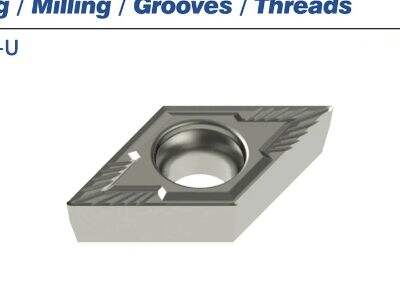כלי קבליים קרביד מול HSS:
להלן ההבדלים בחומרים מהם נוצרת CW והכלים לקבליים HSS ומשפיעים על הביצועים והעומד שלהם. כלים קרביד מורכבים מפחמן וטונגסטן, שהם קשיחים מאוד ולא נשלפים בקלות. מצד שני, כלים HSS מיוצרים מפליז מהיר, שהוא קשיח יותר ויכול לסבול טמפרטורות גבוהות יותר מבלי לאבד את היכולת לחתוך.
ביצועים וחיים של כלים לגילוח גלגיל שנעשים מקארביד ו-HSS.
כלים מקרبيد ידועים ביצירתם המדויקת ובעמידותם הרבה כשמטרדים במתכות קשות כמו פליז אל חלד וטיטניום. בנוסף, הם שומרים על החדות שלהם לאורך זמן רב מה כלים של HSS. עם זאת, HSS הוא גמיש בהרבה יותר וניתן לשיפוד חוזר ונשנה, ולכן הוא פתרון זול יותר למקרים מסוימים.
מתי להשתמש בקרبيد או HSS לגילוח גלגיל:
הבחירה בין קרبيد ל-HSS עבור הכלים לגילוח גלגיל תלויה במספר גורמים, בהם הסוג של החומר אותו תחתכו, מורכבות של פרופיל הגלגיל, רמת הדיוק הנדרשת וגודל הייצור. כלים מקרبيد הם הטובים ביותר לייצור בכמויות גדולות של גלגילים עם סיבובים צמודים, וכלים מ-HSS הם הטובים ביותר לייצור בכמויות קטנות עד בינוניות עם סיבובים רופפים.
יתרונות וחסרונות של קרبيد מול HSS באפליקציות:
לכלי חיתוך קרביד יש יתרונות ביחס לכלי חיתוך נפוצים - הם מתאימים יותר לשימוש מדויק וארוך טווח בשל תכונותיהם. עם זאת, הם יקרים יותר בכניסה ועשויים להזדקקו לציוד מיוחד לצורך חידוד מחדש. להשוואה, כלי חיתוך HSS זולים יותר ורב-תכליתיים ולכן הם הפכו לאפשרות הטובה ביותר ליישומים רבים. עם זאת, הם עלולים להיגרם מהר יותר ולהזדקקו לחידוד תכוף יותר.
תוצאים אופטימליות באמצעות קרביד לעומת HSS בכלים לחריצה על גלגיל
לסיכום, הבחירה בין כלים לקיצוץ גלילים מסוג קרביד לבין HSS תלויה בדרישות שלך ובתקציב שלך. אם אתה צריך כלים מדויקים וארוכי טווח לייצור בגדלים גדולים, ואם קרביד הוא אפשרות – אלו הם הכלים שתרצה שיהיו בצוות שלך. אך אם אתה צריך פתרון זול יחסית עבור נפחים קטנים עד בינוניים עם סובלנות פחותה, כלים מסוג HSS טובים יותר. בסופו של דבר, עליך לחשוב על הדרישות שלך ולשקול את היתרונות והחסרונות של סוגי הכלים השונים.
לסיכום, NIGEL זווית חיתוך של Cnmg כלי חיתוך גדולים למגוון צרכים – בין אם מדובר בקרبيد או HSS. עם זאת, על ידי הכרת ההבחנות בין שני סוגי הכלים, הבנת ביצועיהם, משך הזמן שניתן לצפות שיעבדו בו, היבטים שיש להתחשב בהם בבחירת אחד על פני השני והשוואת היתרונות והחסרונות של כל אחד לשימושים שונים, תצליחו לבצע החלטה מושכלת ולקבל את המיטבי בכלי חיתוך

 EN
EN
 AR
AR
 BG
BG
 HR
HR
 CS
CS
 DA
DA
 NL
NL
 FI
FI
 FR
FR
 DE
DE
 EL
EL
 HI
HI
 IT
IT
 JA
JA
 KO
KO
 NO
NO
 PL
PL
 PT
PT
 RO
RO
 RU
RU
 ES
ES
 SV
SV
 TL
TL
 IW
IW
 ID
ID
 LT
LT
 SR
SR
 SK
SK
 UK
UK
 VI
VI
 HU
HU
 TH
TH
 TR
TR
 FA
FA
 MS
MS
 GA
GA
 AZ
AZ
 BN
BN



